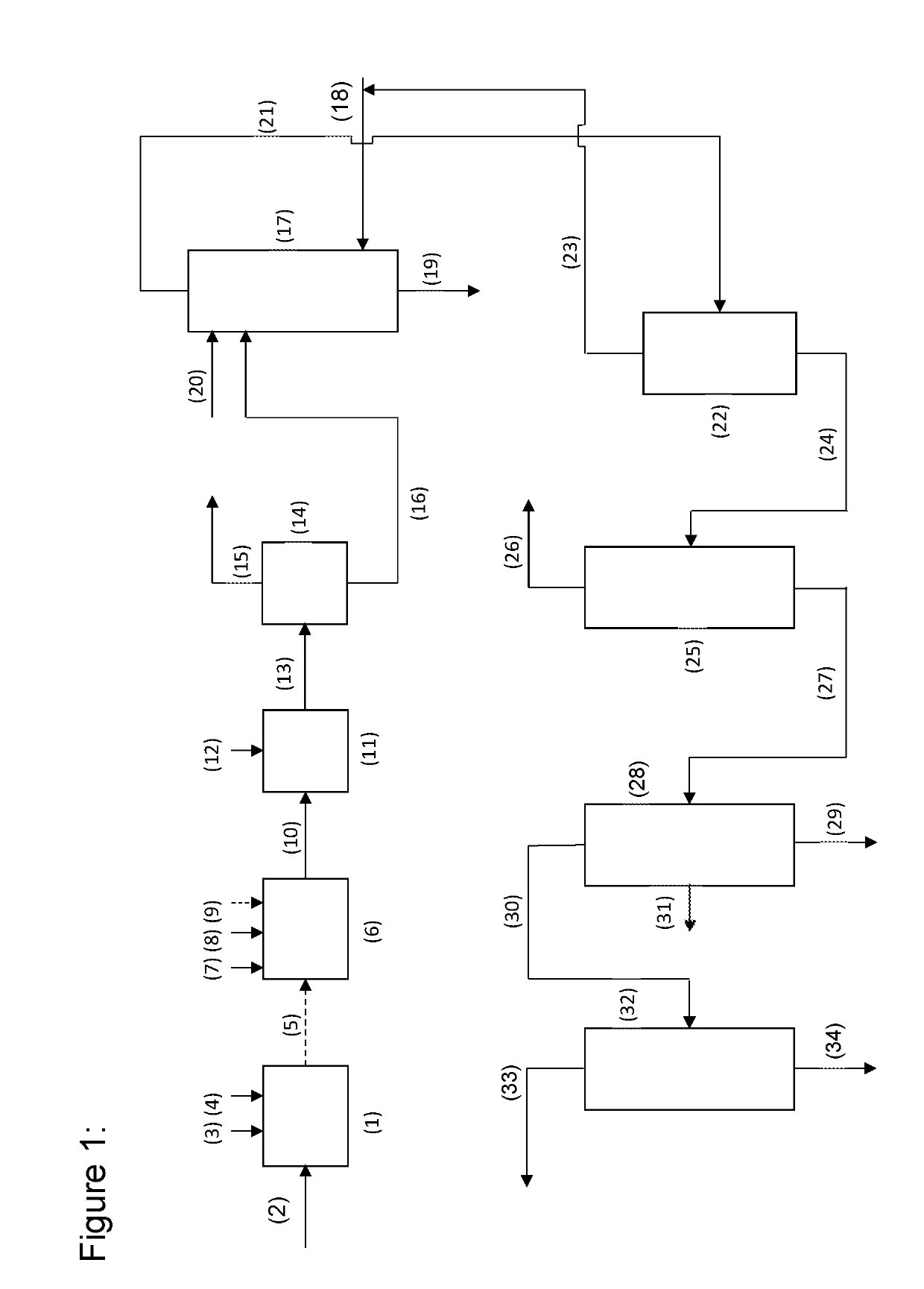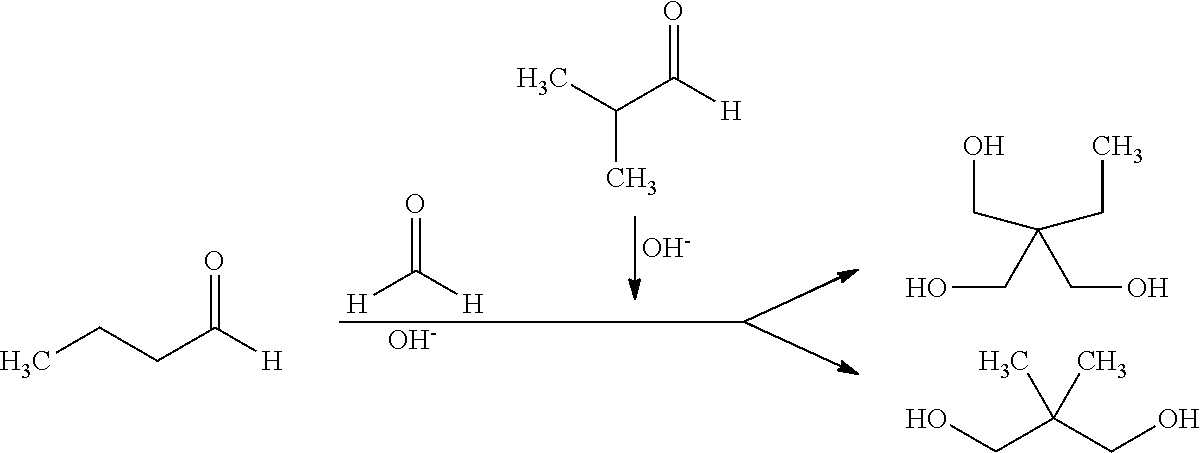Method For The Combined Production of Polyols In The Presence Of An Inorganic Base
a technology of inorganic base and polyol, which is applied in the preparation of organic compounds, organic chemistry, chemistry apparatus and processes, etc., can solve the problem of lowering the risk of temperature peak formation in exothermic reaction in the second process step, and achieves the effect of avoiding cross-reactions, reducing the risk of temperature peak formation in exothermic reaction
- Summary
- Abstract
- Description
- Claims
- Application Information
AI Technical Summary
Benefits of technology
Problems solved by technology
Method used
Image
Examples
examples
[0047]The advantages of the process of the invention are shown by a coupled conversion of n-butanal (n) and i-butanal (i) to, respectively, trimethylolpropane (TMP) and neopentyl glycol (NPG). The examples have been broken down, inter alia, as a function of the addition, the process control (continuous vs. batch) and the reactor type used:
ProcessReactantAddition ofExamplestepProduct(butanal)reactants / process / reactor 1-51TMPnIndividual substance / batch / flask 6-102NPGiIndividual substance / batch / flask111 + 2TMP + NPGn and iMixture / batch / flask12-141 + 2TMP + NPGn and iSeparate / continuous / stirred tank cascade15-181 + 2TMP + NPGn and iSeparate / batch / flask19-221 + 2TMP + NPGn and iSeparate / continuous / tube
[0048]The examples adduced result from a matrix of experiments which was evaluated by statistical methods. This often gives rise to examples in which at least 2 or more parameters have been changed simultaneously relative to another comparative example.
I. Examples 1-5—Individual Batchwise P...
examples 6-10
II. Examples 6-10
Individual Batchwise Preparation of NPG (Flask)
[0054]The Cannizzaro reaction for preparation of NPG was conducted in a 2 l four-neck flask equipped with stirrer, internal thermometer and two dropwise addition vessels.
[0055]The flask was initially charged in accordance with the equivalents of FA specified in Table 2, and the i-butanal and the potassium hydroxide (45% solution) were added uniformly over a period of 10 minutes in accordance with the equivalents given in Table 2 while stirring. By means of the internal thermometer, the reaction temperature was monitored and, if required, kept at the reaction temperature specified with a cold bath (water / ice mixture). After the reaction time specified in Table 2, the reaction is ended by means of addition of formic acid or acetic acid and adjusted to a pH of 6. The respective reaction conditions and the results of the product analysis are listed in Table 2.
TABLE 2Example678910ReactorFlaskFA (% by wt.)3030344049FA eq.2.55...
examples 11-11.1
III. Examples 11-11.1
NPG / TMP Batchwise (Flask)—Simultaneous Mode
[0058]The Cannizzaro -reaction for simultaneous preparation of neopentyl glycol and trimethylolpropane was conducted in a 2 l four-neck flask equipped with stirrer, internal thermometer and two dropwise addition vessels.
[0059]The flask was initially charged in accordance with the equivalents of FA specified in Table 3, and a mixture of the two n- and i-butanal reactants via a dropping funnel and potassium hydroxide (45% solution) in accordance with the equivalents given in Table 3 via a separate dropping funnel were added uniformly over a period of 10 minutes while stirring. By means of the internal thermometer, the reaction temperature is monitored and, if required, kept at the reaction temperature specified with a cold bath (water / ice mixture). After the reaction time specified in Table 3, the reaction is ended by means of addition of formic acid and adjusted to a pH of 6. The respective reaction conditions and the re...
PUM
| Property | Measurement | Unit |
|---|---|---|
| temperature | aaaaa | aaaaa |
| temperature | aaaaa | aaaaa |
| mol % | aaaaa | aaaaa |
Abstract
Description
Claims
Application Information
 Login to View More
Login to View More - R&D
- Intellectual Property
- Life Sciences
- Materials
- Tech Scout
- Unparalleled Data Quality
- Higher Quality Content
- 60% Fewer Hallucinations
Browse by: Latest US Patents, China's latest patents, Technical Efficacy Thesaurus, Application Domain, Technology Topic, Popular Technical Reports.
© 2025 PatSnap. All rights reserved.Legal|Privacy policy|Modern Slavery Act Transparency Statement|Sitemap|About US| Contact US: help@patsnap.com


